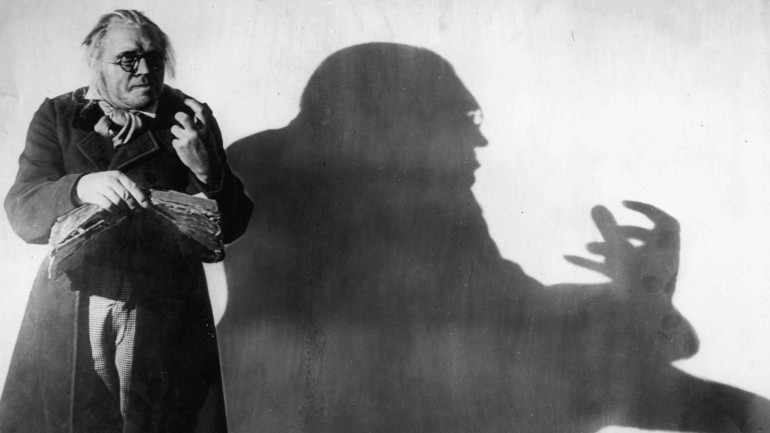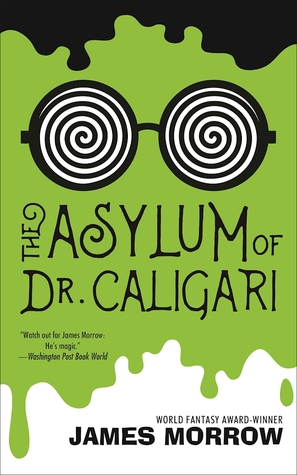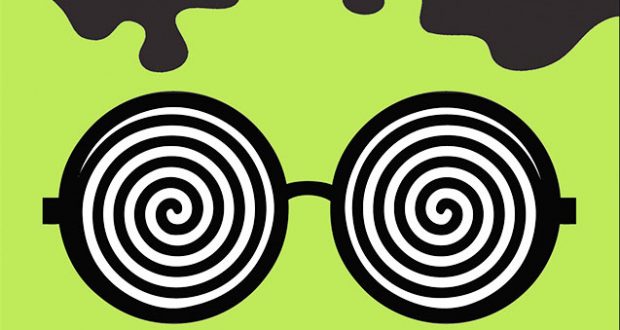Adapting one of the most iconic silent films into a new SF novel sounds like a bizarre idea – or at least it did to me. But then again, reboots seem to be all Hollywood can manage these days, so why shouldn’t we see the same thing happening in novels? Despite my cynicism to this recycling of old ideas, I actually thoroughly enjoyed The Asylum of Dr. Caligari. Morrow riffs on the prose style seen in classics such as Frankenstein, The Strange Case of Dr Jekyll and Mr Hyde, and The Portrait of Dorian Grey while embracing Hammer Horror tropes. The novel effectively transports us into a world of 19th-century gothic fiction while maintaining contemporary sensibilities around plot and characterisation.
‘Man does not live by bread alone, but it’s a good idea to start with the bread.’
 The novel is told from the perspective of Francis Wyndham, a down on his luck, wannabe artist. After failing to impress any artists or curators, Francis is out of money and options. An unexpected boon lands at his feet when another artist is unable to fulfill a teaching commitment he has made to an insane asylum that needs someone to lead an art therapy class. With nothing but his art portfolio, Francis heads off to Caligari’s purpose-built asylum. Like all good gothic horror stories, Dr Caligari and his institution are more sinister than they first appear to our naïve narrator.
The novel is told from the perspective of Francis Wyndham, a down on his luck, wannabe artist. After failing to impress any artists or curators, Francis is out of money and options. An unexpected boon lands at his feet when another artist is unable to fulfill a teaching commitment he has made to an insane asylum that needs someone to lead an art therapy class. With nothing but his art portfolio, Francis heads off to Caligari’s purpose-built asylum. Like all good gothic horror stories, Dr Caligari and his institution are more sinister than they first appear to our naïve narrator.
The villagers are keen to warn Francis about the asylum and the sorcerer psychiatrist at its helm. As is the tradition, Francis ignores the warnings, expecting nothing more than a slightly eccentric new boss. But it doesn’t take long for Francis to realise he is on over his head. Indeed, Caligari is not just a firm believer in hypnotism, but a sorcerer, and an entrepreneurial one at that. Caligari uses his talents to paint a devilish painting – his masterpiece produces in its viewers an insatiable lust for war, fuelling the armies (on both sides) of World War I. With the help of some of the asylum’s lunatics, Francis sets out to destroy the Dr’s psychosis-inducing painting.
‘That Viennese cocksucker never should have turned his back on Charcot and the mesmeric tradition. The future of psychiatry belongs to hypnotism, not to some byzantine theory of sublimated fucking.’
 Morrow relishes in the purple prose invoked as a nod to the gothic literature of the past. He manages to walk an incredibly fine line between reverence for his predecessors and tongue-in-cheek mocking of it, something that goes down very well with me (I found Frankenstein, in particular, irritatingly flowery in its OTT language). Unrestrained by modern sensibilities of restraint, Morrow creates some beautiful prose. There are a number of both poetic and comedic moments like this one: ‘An unmistakable fragrance razored forth, befouling the air.’ In the hands of a lesser author, this purple prose indulgence would have been insufferable. But with Morrow, it’s joyous.
Morrow relishes in the purple prose invoked as a nod to the gothic literature of the past. He manages to walk an incredibly fine line between reverence for his predecessors and tongue-in-cheek mocking of it, something that goes down very well with me (I found Frankenstein, in particular, irritatingly flowery in its OTT language). Unrestrained by modern sensibilities of restraint, Morrow creates some beautiful prose. There are a number of both poetic and comedic moments like this one: ‘An unmistakable fragrance razored forth, befouling the air.’ In the hands of a lesser author, this purple prose indulgence would have been insufferable. But with Morrow, it’s joyous.
Morrow blends the gothic prose style with camp horror all while retaining a feeling historical accuracy – in so far as the contextual setting is concerned (not the fantastical aspects – at least, I don’t think that the war was bolstered by sorcerous means!). If you didn’t know The Asylum of Dr Caligari was published in 2017, you’d be forgiven for thinking it was written not long after WWI. The historical context is used to perfection, with name-drops of real life events and people in a way that shows the author knows his stuff but without intruding on the story more generally. And Dr Caligari’s supposed feud with rival Freud is great fun.
‘Might I need to immolate the monster?’
While the novel does embrace the overt silliness of this kind of gothic horror, it also finds depth in its philosophical approach to the subject matter. The story explores concepts of psychology, psychopathy, profiteering, passion, art, and more. The often slapstick-tinged horror hides a deep and complex underbelly of philosophical exploration. And as such, readers can enjoy the book on either level. If you aren’t interested in delving into the cerebral territory, there’s plenty of surface enjoyment to be had from the gothic horror tale.
Verdict: So thoroughly enjoyable it almost convinces me that the film industry would be justified in remaking the Hammer Horror classics. Well written, inventive, and a great throwback to classics of the genre.
 Pop Verse Pop Culture Universe
Pop Verse Pop Culture Universe






